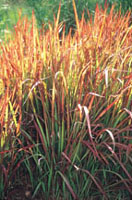Minolta Maxxum XTsi SLR
The Minolta AF SLR cameras
are aimed toward the entry photographer just purchasing their first
SLR as well as more experienced individuals already owning some Maxxum
equipment who need an additional camera body. Actually there are two
practically identical lightweight models, the Maxxum XTsi and HTsi.
The first thing you notice about these cameras is how small and lightweight
they are when compared to the previous "si" models. |
|||
Each camera has a sophisticated
14-segment honeycomb-metering pattern normally only found on higher priced
AF SLR models. Logic technology continuously adjusts the metering pattern;
weighing each segment according to the scene, subject's position
in the frame, and the lighting conditions. |
|||
Merely turning the left control
dial to the Multiple Exposure (ME) and exposure bracketing symbols does
not immediately bring these handy features into use. You also have to
press in on the central Func button in the middle of this dial, then turn
the knurled dial in front of the shutter release. The LCD panel will then
show both icons with either Off or one or the other of the two icons indicating
that feature is in use. As a reminder, the active icon will still remain
visible on the LCD until it is canceled after use. The only exposure bracketing
offered is by 1/2 stop increments, but this is more than adequate for
most conventional lighting situations. I found it effective and simple
to access when I purposely selected some severely backlit subjects, which
I felt, might challenge even the sophisticated 14-segment honeycomb patterning
metering on sensitive color slide film. |
|||
Exposure compensation is available
for bright scenes such as those encountered at the beach or in snow, which
can bias any camera's metering system. To activate this feature,
press in on a button beside the lens labeled "+/-" then turn
the control dial below the shutter release until the desired compensation
value appears in the LCD panel. Up to three stops plus or minus is available
in 1/2 stop increments. |
|||
The suggested list price for the Minolta Maxxum XTsi with 28-80mm f/3.5-5.6 zoom lens is $880; body only is $598. The similar black HTsi model, with the same zoom lens, lists for $770. Contact Minolta Corporation, 101 Williams Dr., Ramsey, NJ 07446; (201) 825-4000; accessing their Photofax at (800) 528-4767; or their web site at: www.minoltausa.com. Technical Specifications Minolta Maxxum XTsi |
- Log in or register to post comments







































